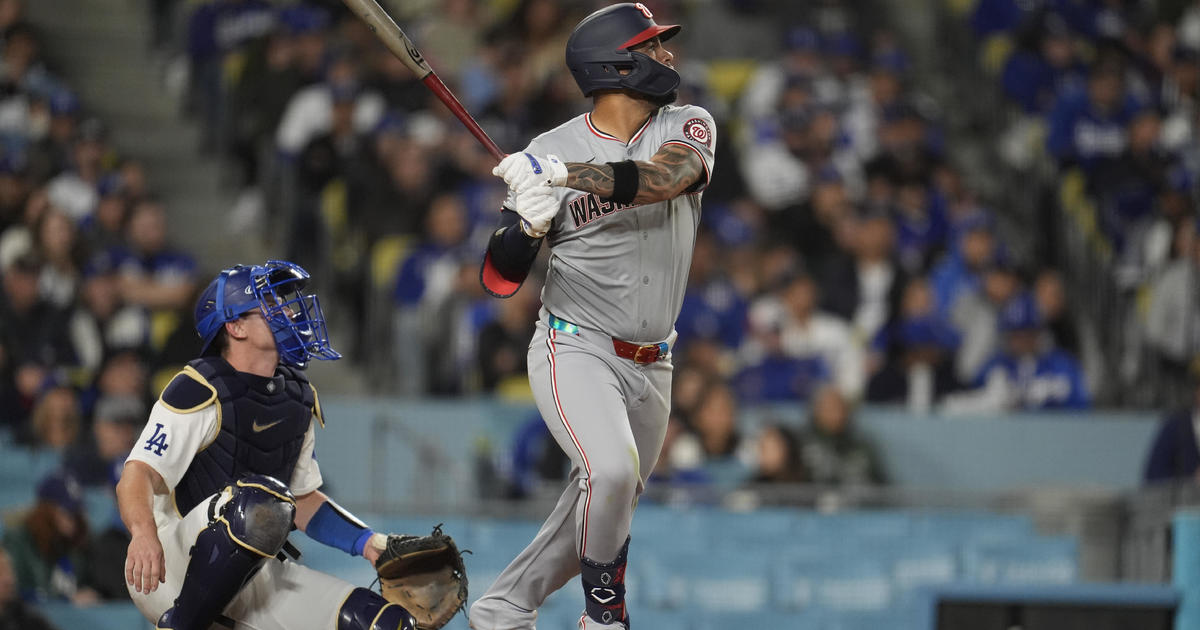NATA Releases New Youth Concussion Guidelines For Sports
WASHINGTON (AP) — As a soccer player growing up in Oklahoma City, Lauren Long earned a college scholarship with an aggressive style of play.
But there was a price to pay for her physicality. It came in the form of concussions -- 10 by the estimate of her and her doctors -- which went undiagnosed until her senior season at MidAmerica Nazarene University (Kan.).
Seven years later, Long still struggles with the effects.
On Monday, Long spoke at the fifth annual Youth Sports Safety Summit, providing evidence of the importance of detection, treatment, and prevention of concussions. Long and others from nearly 140 organizations committed to keeping young athletes safe will meet with legislators on Capitol Hill on Tuesday.
Also on Monday, the National Athletic Trainers' Association released new guidelines on the management of sports concussions. According to one, athletes with concussions should not return to play the same day.
When Long sustained the final concussion of her soccer career -- an opponent hitting her in the face with an elbow -- she was back on the field minutes later.
"They said, `Your nose is broken, but can you go back in?" Long said. "I had never missed a game because of a concussion. Looking back, had the education and awareness been there, I most certainly would have sat out -- two, three (weeks), maybe even a month -- because of what I was feeling."
While the NFL and NHL have established protocols to deal with concussions, other organizations lag behind.
Brian Hainline, chief medical officer of the NCAA, said that the organization is working long term to create a concussion database for all of its athletes. In the short term, changes to football practice guidelines are in the works.
His goal with respect to concussion management is accountability and transparency. But that's not easy to accomplish when athletic trainers at most schools -- he cited Princeton and Stanford as exceptions -- answer to their athletic departments.
"The problem that we're seeing is not about the NCAA," Hainline said. "The problem we're seeing is a societal issue."
Youth Sports Safety Alliance members said getting athletic organizations at lower levels to enhance concussion-management procedures has been challenging.
During Monday's conference, it was pointed out on more than one occasion that Mississippi was the last state to enact concussion legislation for youth sports when it did in January.
There is some evidence that concussion awareness has started to shift the tide. At the high school level, concussion rates have steadily climbed each of the past 11 years.
Dawn Comstock of the University of Colorado, however, notes that concussion rates have declined in wrestling and boys soccer while other sports show a leveling off.
Comstock says the "epidemic curves" are beginning "to peak just a little bit. We've got to figure out why."
The increased awareness over the past decade makes some former athletes, such as Long, wish she had been born 10 years later.
"If someone had said, at 27, this is what you're gonna be like, I'd have walked away a long time ago," Long said.
Long has joined another former soccer player, Samantha Sanderson, to form Concussion Connection, a website to educate and support victims of concussions. Sanderson, a player at Miami who aspired to a professional career, suffered four concussions as a college junior six years ago. Her symptoms remain today.
"The biggest thing for me is (I have) depersonalization," Sanderson said. "I'm still trying to figure out who I am without soccer."
(© Copyright 2013 The Associated Press. All Rights Reserved. This material may not be published, broadcast, rewritten or redistributed.)



